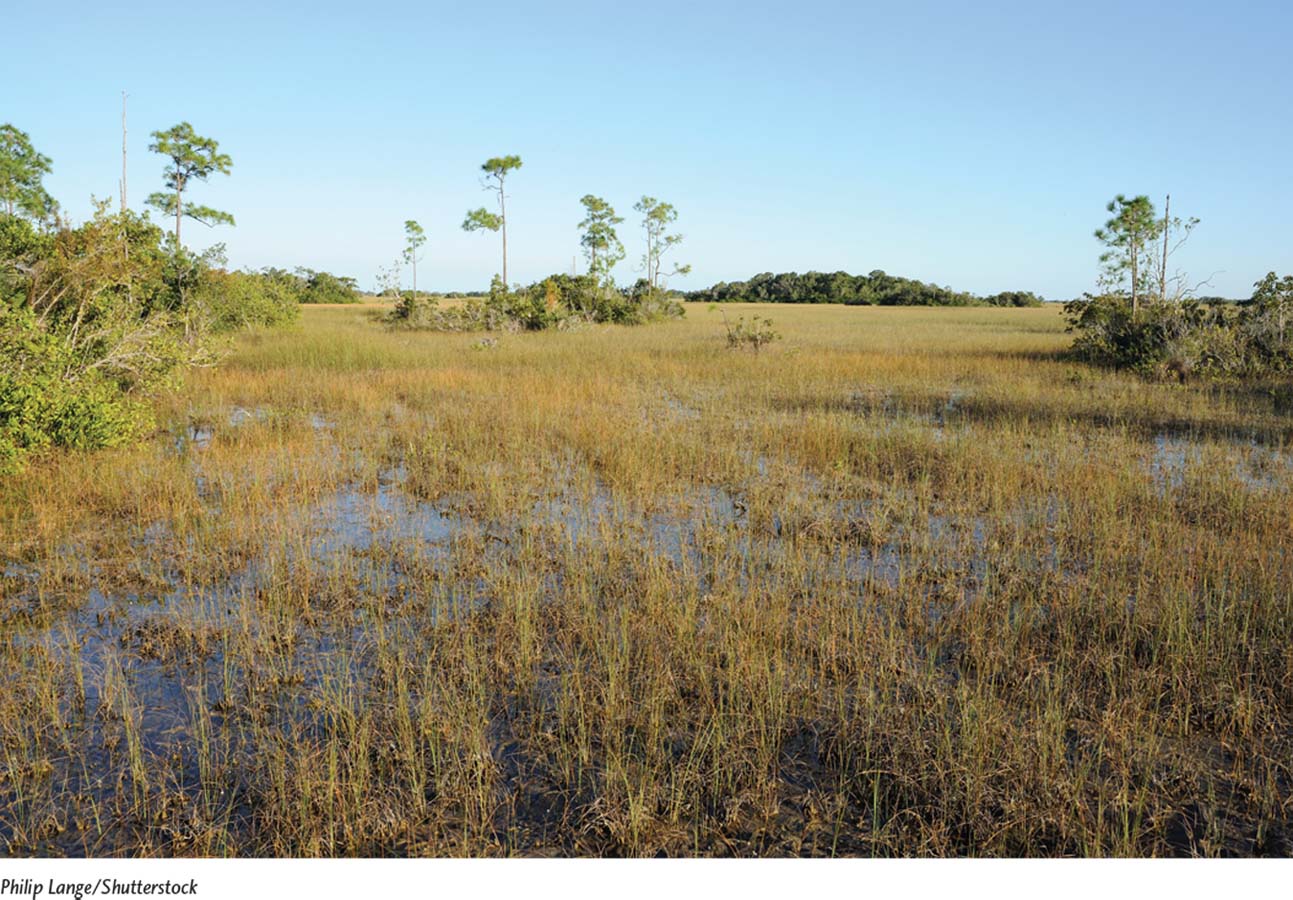2.7
working toward  sustainability
sustainability
Managing Environmental Systems in the Florida Everglades
South Florida’s vast Everglades ecosystem extends over 5,000,000 ha (12,400,000 acres). The region, which includes the Everglades and Biscayne Bay national parks and Big Cypress National Preserve, is home to many threatened and endangered bird, mammal, reptile, and plant species, including the Florida panther (Puma concolor coryi) and the Florida manatee (Trichechus manatus latirostris). The 400,000 ha (988,000 acre) subtropical wetland area for which the region is best known has been called a “river of grass” because a thin sheet of water flows constantly through it, allowing tall water-
A hundred years of rapid human population growth, and the resulting need for water and farmland, have had a dramatic impact on the region. Flood control, dams, irrigation, and the need to provide fresh water to Floridians have led to a 30 percent decline in water flow through the Everglades. Much of the water that does flow through the region is polluted by phosphorus-
The response of scientists and policy makers has been to treat the Everglades as a set of interacting systems and to manage the inputs and outputs of water and pollutants to those systems. The Comprehensive Everglades Restoration Plan of 2000 is a systems-

The first step—
Water conservation will also be a crucial part of reaching this goal. New water storage facilities and restored wetlands will capture and store water during rainy seasons for use during dry seasons, redirecting much of the 6.4 billion liters (1.7 billion gallons) of fresh water that currently flow to the ocean every day. About 80 percent of this fresh water will be redistributed back into the ecosystem via wetlands and aquifers. The remaining water will be used by cities and farms. The federal and state governments also hope to purchase nearby irrigated cropland and return it to a more natural state. In 2009, for example, the state of Florida purchased 29,000 ha (71,700 acres) of land from the United States Sugar Corporation, the first of a number of actions that will allow engineers to restore the natural flow of water from Lake Okeechobee into the Everglades. Florida is currently negotiating to purchase even more land from United States Sugar. In 2013, pilot projects for water storage in Lake Okeechobee were underway.
To achieve the second goal—
Adaptive management plan A plan that provides flexibility so that managers can modify it as changes occur.
The third goal—

The Everglades plan has its critics. Some people are concerned that control of water flow and pollution will restrict the use of private property and affect economic development, possibly even harming the local economy. Yet other critics fear that the restoration project is underfunded or moving too slowly, and that current farming practices in the region are inconsistent with the goal of restoration.
In spite of its critics, the Everglades restoration plan is, historically speaking, a milestone project, not least because it is based on the concept that the environment is made up of interacting systems.
Critical Thinking Questions
Why are the Florida Everglades environmentally significant?
How does your understanding of the Florida Everglades change when you think of the Everglades as a set of interacting systems?
What are some adaptive management strategies utilized in the Florida Everglades?
References
Kiker, C., W. Milon, and A. Hodges. 2001. South Florida: The reality of change and the prospects for sustainability. Adaptive learning for science-
The Comprehensive Everglades Restoration Plan (CERP) Website.